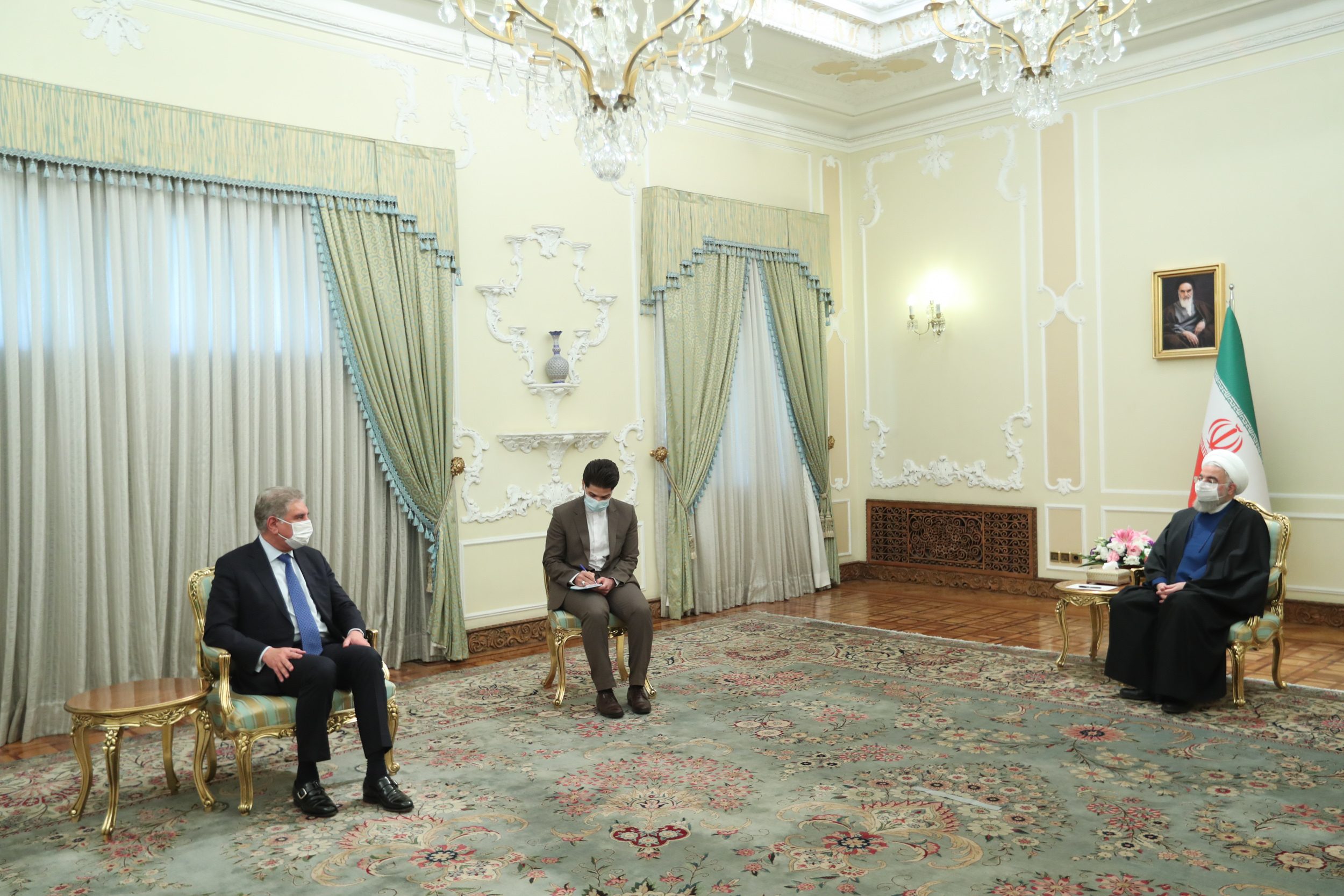At the invitation of Iranian Foreign Minister Mohammad Zarif, Pakistan’s foreign minister, Shah Mahmood Qureshi, arrived in Tehran on April 20 for a three-day visit. According to Iran’s Tehran Times reported on April 20, Pakistan’s Foreign Ministry issued a statement the same day, Qureshi will be Zarif, Iranian President Rouhani, Iran’s parliament spokesman Mohammad Baqer Qalibaf held talks.
Japan’s “Diplomatic Scholars” magazine 23 article pointed out that border security in the past few years has been the top concern of both countries. The border between the two countries has been closed for at least a month, and the decades-old problem of fuel smuggling on the border has come under renewed scrutiny.
“Iran has expressed interest in Pakistan’s proposed border market and we will discuss it, ” Mr Qureshi said. “In order to increase legitimate border trade, the foreign ministers of the two countries signed a memorandum of understanding to open new border crossings and to establish six joint border markets in the border areas. On April 21st officials from the two countries jointly opened the third crossing point between Mand, Pakistan, and Pishin, Iran.
Al Jazeera reported on April 22 that Rouhani met with Qureshi in Tehran on the 21st, calling for enhanced cooperation with Pakistan to control the border between the two countries. Qureshi on the same day in a meeting with Zarif called for the establishment of more border markets.
In addition, the Islamic Republic of Iran News Agency reported that the two foreign ministers also discussed in the border areas “to combat organized crime, end illegal immigration” and other issues.
In recent years, there have been a number of security incidents on the Iranian-Pakistani border, mainly against Iranian troops. In an effort to improve the security situation and promote legitimate trade, Pakistani Prime Minister Imran Khan proposed a border wall in 2019, with the two countries planning to build a 959-kilometer-long wall by December 2021.
However, residents of the border areas between Iraq and Pakistan are very dissatisfied with this. Thousands of pickup trucks are reported to be lining up along the border between the two countries as a result of the border blockade. These pickup trucks carry whole barrels of fuel, mostly diesel. Although this cross-border fuel smuggling is illegal, it is common on the border between Iran and Pakistan. Iran’s energy exports are severely restricted by U.S. sanctions, but once Iranian energy arrives in Pakistan, sales are much broader.
The border areas between Iraq and Pakistan are economically backward and employment opportunities are very limited, so many border residents are keen to smuggle oil. Through the cash flow obtained from the illegal trade along the Iba border, Iran can also effectively overcome economic difficulties, and some analysts believe that the Iranian government has not carried out a thorough crackdown on illegal fuel smuggling.
However, over the past decade, both Iran and Pakistan have agreed to build a wall along the border, given the growing security problems in the border areas between the two countries and the real economic losses caused to Pakistan by cross-border smuggling.
Diplomats note that it is too early to say whether the Ibar border wall is permanent, and that “can the Governments of Pakistan and Iran provide other jobs to the thousands of border residents who rely on the illicit fuel trade?” How can the Iranian government fill the revenue gap created by ending fuel smuggling at the border while sanctions remain in force? Does the Government of Pakistan expect the revenues from legitimate border trade to be truly used for local development? If there are no answers to these questions, it is also too early for the two Governments to implement the plan effectively. ”



